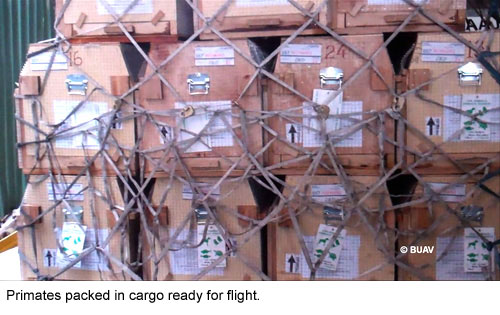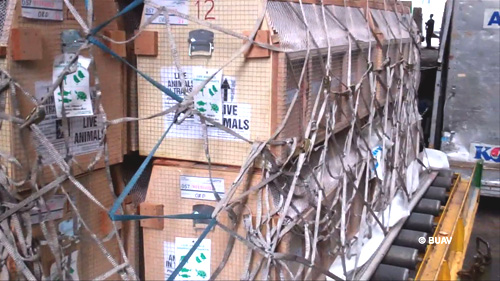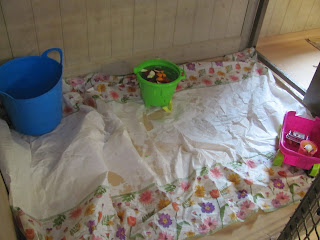Primates Suffer in Cargo Transport

Airlines transport primates packed into small wooden crates to research facilities worldwide, including to the U.S. Some die in transport because of the deplorable conditions of being shipped as cargo. Others endure and survive only to reach a cruel fate in research.
A recent report from BUAV cited 11 airlines that continue to transport primates. They found that Air France ships to Covance Clinical Research Units in the USA; Air Canada ships primates from China to labs in Canada; and China Southern and Eastern airlines transport them to the U.S.
During flights, the primates endure delays, poor ventilation, noise and dangerous temperature fluctuations on their extremely long journeys. The anxiety and stress they suffer can lead to increased susceptibility to infection. Documents obtained by BUAV provide a disturbing insight into how these animals suffer.
 The following reported incidences illustrate the pain and suffering endured by the primates:
The following reported incidences illustrate the pain and suffering endured by the primates:
‘On uncrating, he was found in moribund condition. Part of the wooden crate had been chewed away and no food was present in the crate. The primate died while IV fluids were being administered.’
‘One animal died during transport from Vietnam. The animal was removed in Paris at the airport; the cause of death was reportedly from ... [the build-up of gas in the intestinal tract]
‘One animal imported from Mauritius was dead on arrival.’
Conditions that resulted in the death or euthanasia of primates (during the quarantine period) imported into the USA during 2009 included pneumonia, enteritis, gastroenteritis, dehydration, weight loss, poor body condition and infection.
 NEAVS is calling on supporters to contact airlines listed below to request that they cease involvement in primate transport and implement an immediate ban on the transportation of primates for research.
NEAVS is calling on supporters to contact airlines listed below to request that they cease involvement in primate transport and implement an immediate ban on the transportation of primates for research.
Suggested text
I am shocked to learn that your airline has, is or would be involved in the international transportation of primates to laboratories. It is inhumane and unacceptable that living animals are packed into small crates and shipped like cargo only to end up in laboratories where they will suffer or die in experiments.
I urge you to join the increasing number of airlines that have stopped their involvement in this money making cruelty and instead refuse to be a part of the trade in living animals for profit and research. Until you do, I will not be flying with your airline.
Sincerely,
Your name
__________________
Send to:
Air Canada
Air Canada Centre
Fax: +44 (0) 208 750 8495
Email: acexecutive.hautedirectionac@aircanada.ca and aircanada_customercare_en@mailca.custhelp.com
American Airlines
Gerard J. Arpey, Chairman
Fax: +44 (0)20 8745 1469
Email: Customer.Relations@aa.com
LiveAnimals.Cargo@aa.com
contactus@aacargo.com
Continental Airlines
Fax: +44 (0)1293 567122
Email: corpcomm@coair.com
Other Airlines:
Air China
Email: info@cacargo.co.uk
Air France
Email: customer-service.LHR@klmcargo.com
Caribbean Airlines
Email: cto.uk@caribbean-airlines.com
China Eastern Airlines
Email: saleslondon@chinaeastern.co.uk
China Southern Airlines
Email: csnib@csair.com and ecsupport@csair.com
Philippine Airlines
Email: corpcomms@pal.com.ph
Vietnam Airlines
Email: cargo@vietnamair.com.vn















































